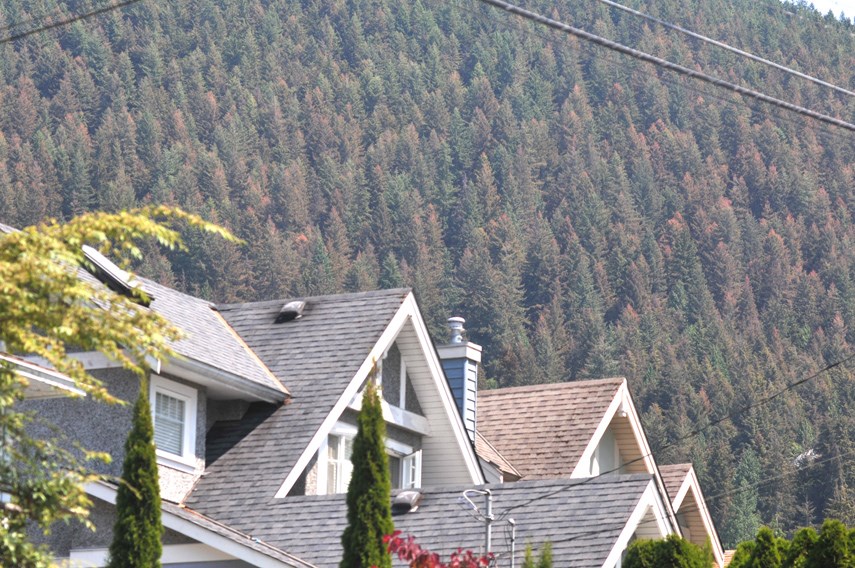They’re back and the little beasts are hungry.
An outbreak of Western hemlock looper moths, a native species that defoliates trees common on the North Shore, is now into its third and hopefully final year.
Every 11 to 15 years, their population spikes and, while they’re still in the larval phase, they feed on the needles of trees, causing them to turn orange or die. They prefer hemlock, as their name would suggest, but they will also eat Douglas fir and western red cedar.
“This is a more severe outbreak for North Van than they've experienced in the past and I think a lot of this is compounded with the consecutive years of drought that we've had,” said Babita Bains, provincial forest entomologist. “What we're seeing right now in the North Shore is earlier than usual. Typically, we don't see that orange hue or the discoloration of the trees until later in the summer. So I think that's an indication we have a really high population but the hosts also, clearly, are more susceptible.”
Bains said she’d hoped to see the looper population crash following a particularly bad year in 2020, but she said a three-year outbreak is not uncommon.
Trees that suffer a low or moderate amount of defoliation typically rebound, but ones that are already stressed or nearing the end of their natural lives will likely die. That is part of the natural lifecycle of the forest as it puts nutrients back in the soil and makes room for younger trees to thrive.
“It's just always alarming when it's in an interface area or high-use area, like North Vancouver,” Bains said.
But, Bains added, climate change is absolutely exacerbating the outbreak's impacts, making trees that are already under stress and less resilient.
Much of the forested area of the North Shore is part of the Metro Vancouver watershed.
It is possible to deploy a spray that is toxic to the loopers but not to other species if the loopers are deemed a threat. Metro staff are closely monitoring for impacts on water quality, erosion and wildfire risk but, so far, there is no need to try to control their population, said Jessie Montgomery, Metro’s division manager in the watershed.
“We’re keeping a close eye on it,” he said.
In the early 2000s, there was an intense looper outbreak in the Coquitlam watershed. While the tree mortality rate may be high in the short term, the forest will be healthier over the longer term, Montgomery said.
“As soon as you’ve all of a sudden let all this light in through the forest canopy down to the forest floor that hasn’t seen light, in some cases, in decades, you’ll get a pretty rapid regeneration of other species and new hemlock and cedar trees too,” he said. “These forests have evolved over many millennia to respond to disturbance and usually respond back in a fairly flourishing manner with good wildlife habitat diversity and other characteristics that are often not common in second growth forests.”
In the coming weeks, the larvae, which look like inch worms, will go through their metamorphosis into moths, so it might be a good idea to turn the porch light off, Montgomery added.


